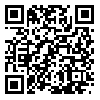Volume 1, Issue 3 (Summer 2020)
J Vessel Circ 2020, 1(3): 40-42 |
Back to browse issues page
Download citation:
BibTeX | RIS | EndNote | Medlars | ProCite | Reference Manager | RefWorks
Send citation to:



BibTeX | RIS | EndNote | Medlars | ProCite | Reference Manager | RefWorks
Send citation to:
Mozhdehipanah H, Gorji R. Subarachnoid Hemorrhage as a Manifestation of Magic Mushroom Abuse: A Case Report and Review Literature. J Vessel Circ 2020; 1 (3) :40-42
URL: http://jvessels.muq.ac.ir/article-1-62-en.html
URL: http://jvessels.muq.ac.ir/article-1-62-en.html
1- MD, Assistant Professor, Department of Neurology, Bu-Ali Sina Hospital, Qazvin University of Medical Sciences, Qazvin, Iran
Abstract: (18249 Views)
Background: Psilocybin mushroom, which is worldwide famous as magic mushroom, is a relatively well-characterized hallucinogen manifesting a diverse dose-dependently spectrum of effects on healthy humans. As psilocybin has been increasingly abused among the youth, this research aimed to review the effects of the psilocybin administration, which is considered as either a good or bad trip among the consumers.
Case Report: This research reported a 20-year-old man who presented with severe thunderclap headache and consequent subarachnoid hemorrhage as a result of magic mushroom consumption.
Conclusion: The neurologic presentation of psilocybin could be various, which might lead to emergent situations as subarachnoid hemorrhage, and the notion of the harmlessness of magic mushroom was called into question.
Case Report: This research reported a 20-year-old man who presented with severe thunderclap headache and consequent subarachnoid hemorrhage as a result of magic mushroom consumption.
Conclusion: The neurologic presentation of psilocybin could be various, which might lead to emergent situations as subarachnoid hemorrhage, and the notion of the harmlessness of magic mushroom was called into question.
Type of Study: case report |
Subject:
vascular neurological diseases
Received: 2021/03/7 | Accepted: 2021/03/13 | Published: 2020/11/30
Received: 2021/03/7 | Accepted: 2021/03/13 | Published: 2020/11/30
References
1. 1. Guzmán G. Hallucinogenic mushrooms in Mexico: an overview. Econ Bot 2008;62(3):404-12. DOI: 10.1007/s12231-008-9033-8 [DOI:10.1007/s12231-008-9033-8]
2. Rush JA. Entheogens and the development of culture: the anthropology and neurobiology of ecstatic experience. Berkeley, California: North Atlantic Books; 2013. P. 488. Link
3. Carter OL, Burr DC, Pettigrew JD, Wallis GM, Hasler F, Vollenweider FX. Using psilocybin to investigate the relationship between attention, working memory, and the serotonin 1A and 2A receptors. J Cogn Neurosci 2005;17(10):1497-508. DOI: 10.1162/089892905774597191 [DOI:10.1162/089892905774597191]
4. Samorini G. The oldest representations of hallucinogenic mushrooms in the world (Sahara Desert, 9000-7000 BP). Integration 1992;2(3):69-78. Link
5. Studerus E, Kometer M, Hasler F, Vollenweider FX. Acute, subacute and long-term subjective effects of psilocybin in healthy humans: a pooled analysis of experimental studies. J Psychopharmacol 2011;25(11):1434-52. DOI: 10.1177/026 9881110382466 [DOI:10.1177/0269881110382466]
6. Passie T, Seifert J, Schneider U, Emrich HM. The pharmacology of psilocybin. Addict Biol 2002;7(4):357-64. DOI: 10.1080/1355621021000005937 [DOI:10.1080/1355621021000005937]
7. Brande E. Mr. E. Brande, on a poisonous species of agaric. Med Phys J 1800;3(11):41-4. Link
8. Hallock RM, Dean A, Knecht ZA, Spencer J, Taverna EC. A survey of hallucinogenic mushroom use, factors related to usage, and perceptions of use among college students. Drug Alcohol Depend 2013;130(1-3):245-8. DOI: 10.1016/j. drugalcdep.2012.11.010 [DOI:10.1016/j.drugalcdep.2012.11.010]
9. Sewell RA, Halpern JH, Pope HGJ. Response of cluster headache to psilocybin and LSD. Neurology 2006;66(12):1920-2. DOI: 10.1212/01.wnl.0000219761.05466.43 [DOI:10.1212/01.wnl.0000219761.05466.43]
10. Schindler EA, Gottschalk CH, Weil MJ, Shapiro RE, Wright DA, Sewell RA. Indoleamine hallucinogens in cluster headache: results of the clusterbusters medication use survey. J Psychoactive Drugs 2015;47(5):372-81. DOI: 10.1080/02791072.2015.1107664 [DOI:10.1080/02791072.2015.1107664]
11. Johnson MW, Sewell RA, Griffiths RR. Psilocybin dose-dependently causes delayed, transient headaches in healthy volunteers. Drug Alcohol Depend 2012;123(1-3):132-40. DOI: 10.1016/j.drugalcdep.2011.10.029 [DOI:10.1016/j.drugalcdep.2011.10.029]
12. Czyrak A, Czepiel K, Mackowiak M, Chocyk A, Wedzony K. Serotonin 5-HT1A receptors might control the output of cortical glutamatergic neurons in rat cingulate cortex. Brain Res 2003;989(1):42-51. DOI: 10.1016/s0006-8993(03)03352-3 [DOI:10.1016/S0006-8993(03)03352-3]
13. Gonzalez-Maeso J, Yuen T, Ebersole BJ, Wurmbach E, Lira A, Zhou M, et al. Transcriptome fingerprints distinguish hallucinogenic and nonhallucinogenic 5-hydroxytryptamine 2A receptor agonist effects in mouse somatosensory cortex. J Neurosci 2003;23(26):8836-43. DOI: 10.1523/JNEUROSCI.23-26-08836.2003 [DOI:10.1523/JNEUROSCI.23-26-08836.2003]
14. Paybast S, Ashraf A, Sarshad H, Shakiba M, Moadabi Y. Propagating relationship of cerebral oximetric volume and the clinical outcome of recombinant tissue plasminogen activator (r-TPA) therapy on acute cerebral ischemic stroke patients. Adv J Emerg Med 2019;4(1):e7. DOI: 10.22114/ajem.v0i0.174
15. Grasso G, Alafaci C, Macdonald RL. Management of aneurysmal subarachnoid hemorrhage: state of the art and future perspectives. Surg Neurol Int 2017;8:11. DOI: 10.4103/2152-7806.198738 [DOI:10.4103/2152-7806.198738]
16. Aghamiri H, Paybast S, Lima BS, Mansoori B. New advances in acute ischemic stroke management. Int Clin Neurosci J 2020;7(2):55-60. Link [DOI:10.34172/icnj.2020.02]
Send email to the article author
| Rights and permissions | |
 |
This work is licensed under a Creative Commons Attribution-NonCommercial 4.0 International License. |









